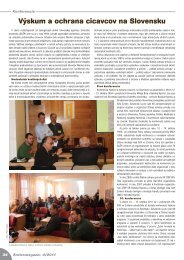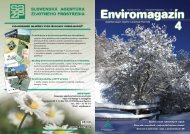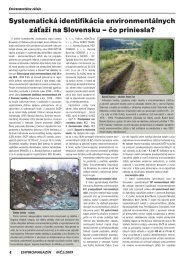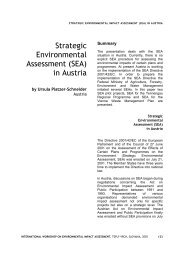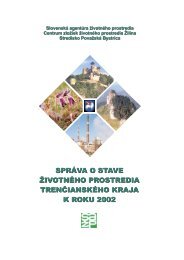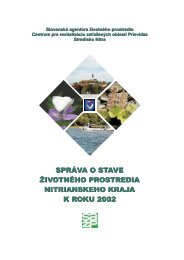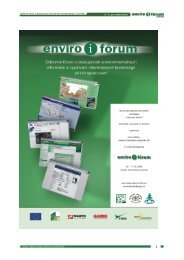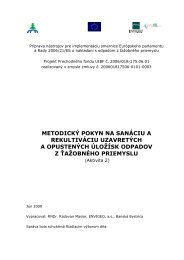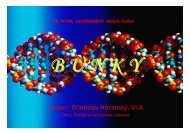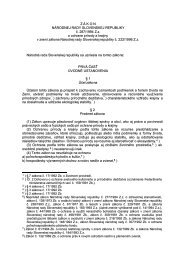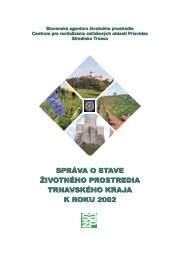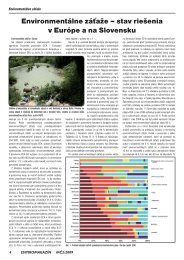Annex I - âDescription of Workâ - Hlandata
Annex I - âDescription of Workâ - Hlandata
Annex I - âDescription of Workâ - Hlandata
Create successful ePaper yourself
Turn your PDF publications into a flip-book with our unique Google optimized e-Paper software.
CIP-ICT PSP-2009-3Pilot BHLANDATA• In Europe there is a long history <strong>of</strong> European (top-down) approaches to Land Cover / LandUse monitoring, including harmonization aspects (in the sense <strong>of</strong> a common nomenclaturecategorization).These activities can be divided in different spatial components:oooGlobal: ESA Globcover program, currently GlobCORINE project.Continental/regional: Currently represented by CORINE Land Cover, but furtherdevelopment are on the way towards CORINE Land Cover ++ supported by ESAGSE and EC FP (GEOLAND, GEOLAND2) projects.Local: Urban Atlas supported by DGREGIO with coverage <strong>of</strong> 300+ Large UrbanZones – 2009-2011 (initial mapping) 2011-2013 (first update).All these activities are nowadays framed within GMES Land Monitoring and supported to befully operational from 2013. For complete picture EUROSTAT LUCAS exercise is nowadaysmore and more considered as part <strong>of</strong> the GMES Land monitoring developments with focus onin-situ component. For most <strong>of</strong> these mapping activities CLC nomenclature is considered asde-facto standard to which other nomenclatures are referring.Regarding the initiatives related to the harmonization <strong>of</strong> the data model <strong>of</strong> the Land Use-LandCover information, some initiatives have been launched or are being carried out at the moment: Forexample, the Spanish SIOSE project has proposed an object oriented UML normalized model at aSpanish level and at European level the most significant initiative is the Plan4All project, launchedrecently and which deals with the harmonization <strong>of</strong> spatial planning data. It is expected that the projectwill provide among its results a proposal for the Land Cover and Land Use data model.On the other hand there is a growing bottom-up effort in Land Cover / Land Use monitoring domainrelated to INSPIRE and SEIS development at Member States level, which have to be integrated andboth options to be harmonized into the final mixed approach setup. Spanish SIOSE, but also UK,Germany or Finland initiatives are good example <strong>of</strong> such integration <strong>of</strong> European and national sourcesfor harmonised Land Cover / Land Use monitoring services on European level for added-valueservices use.Unfortunately, despite the initiatives which have already been carried out others that are being carriedout at present moment, there is no valid data harmonization model for the Land Cover and LandUse datasets, taking into account both the data categorization and the data model and the endusers’ specificities, which is could be valid for all the application areas and at a European level.The initiatives carried out until the present moment have resulted in generic harmonized data modelswith do not take into account the end user needs. Furthermore, there is no running initiative in thissense which could be used by INSPIRE teams at the time <strong>of</strong> starting the work with the Land Coverand Land Use themes.PROJECT CONCEPT:The HLANDATA project aims at making a significant step forward in overcoming theaforementioned barrier, fostering the use <strong>of</strong> the Land Use and Land Cover geographic data at aEuropean level through the creation <strong>of</strong> value-added European services. The project approach will bedifferent from those carried out up to the moment: While other initiatives carried out up to themoment have addressed the harmonization <strong>of</strong> the Land Use and Land Cover data from thecategorization or data model perspective from a generic perspective, without taking into accountthe specific perspective <strong>of</strong> the end users, the HLANDATA project will broaden this approachaddressing the same problem from a very practical approach, taking into account both the datamodel and the data categorization together with the different users’ and applications’ needswhen using these datasets.Multipurpose aspect is particularly relevant for Land Cover Land Use data as this is an essentialfeature <strong>of</strong> this domain – good multipurpose data model will also ensure effective use <strong>of</strong> Land Cover23/03/10 v11 9



